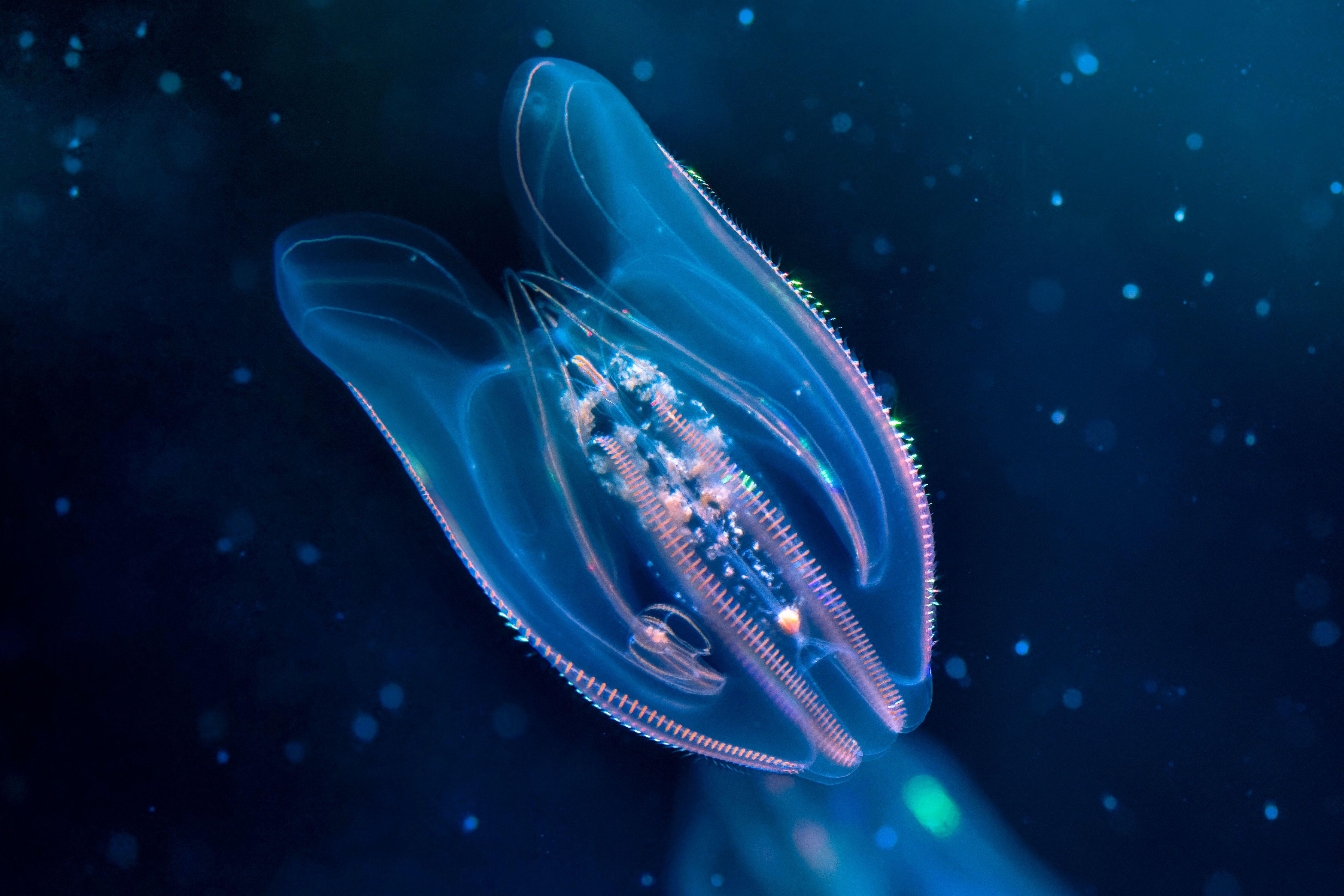Science
Related: About this forumThe Closest Living Relative of the First Animal Has Finally Been Found
A debate has been settled over the earliest animal ancestor—a free-swimming creature with a well-developed nervous system
By Viviane Callier on May 17, 2023

A bioluminescent comb jelly, or ctenophore. Credit: Jacques Julien/Alamy Stock Photo
Deep, deep in geologic time, some 600 million or 700 million years ago, the very first animals evolved on Earth. Their closest relatives that still live today include sponges, sea anemones and comb jellies. But exactly which of these is truly the closest relative to the very first animals has remained one of the most contentious questions in evolutionary biology. With few fossils of these early, squishy animals, their history has necessarily been muddy, and it has been challenging to reconstruct what happened.
A study published on May 17 in Nature resolves the relationships of these early animals by looking at the chromosomes of sponges, comb jellies, jellyfish and three close single-celled relatives of animals. By studying the pattern of chromosomes at the base of the animal evolutionary tree breaking and fusing together, a team of researchers at the University of California, Berkeley, University of Vienna, Monterey Bay Aquarium Research Institute and University of California, Santa Cruz, determined that comb jellies, more formally known as ctenophores, are in fact the closest relatives of the first animals.
“Understanding these deepest relationships in the animal tree of life is absolutely critical for reconstructing the history of the origin and evolution of a lot of the complex traits that we’re most interested in—things like the nervous system and animal symmetry,” says Casey Dunn, an evolutionary biologist at Yale University, who was not involved in the study.
The implicit assumption for more than 100 years was that the history of animal evolution was largely a stepwise addition of complex features in the animal lineage, Dunn explains. Chief among those widely held assumptions was that sponges are really primitive because they lack neurons and muscles. That led to the idea that they must have split off from the animal lineage before neurons and muscles originated. Comb jellies have muscles and a network of neurons, so they were thought to branch later.
More:
https://www.scientificamerican.com/article/the-closest-living-relative-of-the-first-animal-has-finally-been-found/

Goonch
(3,836 posts)
NullTuples
(6,017 posts)Colonies, that is, of single cell organisms that have specialized the same way cells in a single body do. The Portuguese man-of-war (Physalia physalis) is a great example - the individual organisms have evolved together to be so highly specialized they can no long longer survive without each other. That's only a single step of a shared single set of genes where individual genes are switched on and off from being a multicellular animal instead of being carried by separate single cell organisms. But what a step!
Hekate
(95,470 posts)erronis
(17,279 posts)come from? They obviously skipped the step involving functional neural intelligence.
I guess I can see the connection to sponges...
FoggyLake
(108 posts)I kind of expected a meme about MTG.
mike_c
(36,407 posts)summer_in_TX
(3,330 posts)Starship Enterprise???